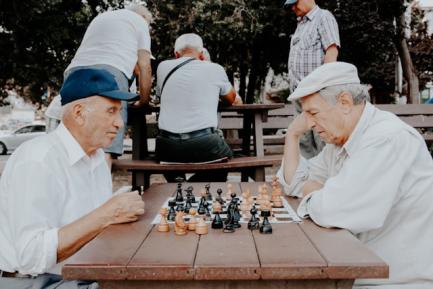The consumption of each generation in normal times... and in times of pandemic
Has the COVID-19 affected the consumption habits of each generation or the same types of goods in equal measure? How did we consume before and during the pandemic?

Each generation has its own consumption pattern. Young people, more prone to change and eager for novelty, tend to be the focus of attention for advertisers and marketing firms with the goal of attracting them and anticipating future consumer trends. However, it is the adult population that accounts for the majority of consumption: in 2019, the population from 30 to 64 years of age accounted for 73% of total card expenditure.1 Also, those over the age of 65 have greater purchasing power than in the past and represent an increasing percentage of the population: in 2020, 1 in every 5 Spaniards were aged 65 or older, whereas in 2035, 26.5% of the population will be in this age range.2
We know that the COVID-19 crisis has had a big impact on consumption, both because of the mobility restrictions themselves and because of the increased economic uncertainty.3 According to data from the national accounts maintained by the National Statistics Institute (NSI), private consumption in Spain fell by 12.4% in real terms in 2020, an even more pronounced decline than that of GDP (10.8%). But has the COVID-19 crisis affected the consumption habits of each generation or the same types of goods in equal measure? How did we consume before and during the pandemic?
To answer these questions, given that public sources such as the NSI’s household budget survey are only available up until 2019, we turned to CaixaBank’s internal data, which already allow us to analyse how the consumption of each generation evolved in 2020 during the pandemic.4 To do this, we analysed the card payment data of 13.4 million CaixaBank customers, completely anonymised and classified into three different age groups: young (from 18 to 29 years of age), adult (30 to 64) and senior (65 and over). Their consumption habits are representative of the consumption carried out by each generation in Spain.5 We shall begin by studying them in normal times, in order to then compare them with what happened following the fateful events of 2020.
- 1. According to internal consumption data for cards issued by CaixaBank (excludes cash withdrawals at ATMs).
- 2. National Statistics Institute. «Population projections. 2020-2070».
- 3. See, for example, J.M. González, A. Urtasun and M. Pérez (2020). «Consumption in Spain during the state of alert: an analysis based on payment card spending». Economic Bulletin of the Bank of Spain, nº 3, 2020. Or N. Cox et al. (2020). «Initial Impacts of the Pandemic on Consumer Behavior: Evidence from Linked Income, Spending, and Savings Data». BFI Working Paper.
- 4. For a general approach, see the Focus «Analysing private consumption during the COVID-19 crisis» in the MR07/2020.
- 5. The proportion of average consumption and that of each generation observed in the data from CaixaBank’s Consumption Tracker is very similar to that of the NSI’s household budget survey for types of goods that are comparable between the two databases (food and beverages, clothing and footwear, or restaurants and hotels).
In Spain, in periods free of restrictions on activity (such as 2019, the year we take as a benchmark), young people, adults and older people have different tendencies in their consumption of each type of good, as a result of their differing preferences and resources (see first chart). Most of the consumption carried out by seniors is devoted to essential goods (food and pharmacy goods, 44%), whilst adults and young people spend a lower percentage on this category (36% and 22%, respectively). In contrast, young people are the generation that spends the most on leisure and catering (32%), far more than adults and seniors. The proportion of total consumption devoted to durable goods (electronics, textiles, furniture, etc.) is more similar between generations, accounting for around a quarter of the total, albeit with differences depending on the type. For instance, young people devote roughly half of their consumption of durable goods to textiles and sports (47%), compared to 41% among adults and 35% in the case of seniors. Finally, the proportion of consumption allocated to tourism and transportation is the closest between the generations, both representing around or slightly below 10%, although the spending levels differ.6
- 6. A senior’s average card spending in 2019 was half that of an adult’s (49%), while that of a young person was 91% of an adult’s.

During the first few months of the pandemic, the restrictions on activity made a significant dent in the consumption of all generations (measured in year-on-year terms). The biggest declines were registered in April, amounting to between 60% and 80% in leisure and catering and in durable goods, and exceeding 85% in the case of transportation and tourism (see second chart). The only exception was the improvement in the consumption of essential goods, which registered increases of more than 50%. This increase was delayed by a couple of months in the case of seniors, possibly because relatives and friends initially did the shopping for their elders in many cases.

The recovery in the following months, however, was more varied by age group. The consumption of essential goods among older people increased more than among young people and adults, and more persistently too. In the last quarter of 2020, the consumption of essential goods among seniors was 37% higher than in Q4 2019, 10 pps more than the increases registered among young people and adults. On the other hand, the consumption of the elderly in the categories of leisure and catering and in tourism recovered more slowly than in the other generations, and only partially. In the last quarter of 2020, their average consumption in leisure and catering was 23% lower than in the previous year, while in the case of tourism it was 66% lower. In contrast, young people and adults allocated a significant portion of their spending in the summer to leisure and catering and to tourism, categories on which they had spent very little in the preceding months. It therefore appears that there was greater intratemporal substitution of consumption in catering and tourism for essential goods among seniors than in the other generations. In contrast, young people and adults followed a pattern of intertemporal substitution, postponing spending on leisure and catering and on tourism from Q2 to Q3 rather than replacing it with other categories of goods. These differences in behaviour show that the recovery of pent-up demand for leisure and tourism was more concentrated in these latter two age groups in 2020. However, the senior group could play a greater role in the summer of 2021, when they will have been vaccinated and will have greater freedom of movement. On the other hand, as the autumn of 2020 progressed and the new restrictions imposed to control the second wave were tightened, all generations once again reduced their consumption in all types of goods.
In short, the differences in the recovery of consumption show that preferences and priorities matter, and that post-pandemic consumption could be different for each generation. In the following articles we analyse these patterns in greater detail for the cases of e-commerce, the use of cash and digital payment methods, and we compare the evolution of each generation’s consumption with that of its income.
- 1. According to internal consumption data for cards issued by CaixaBank (excludes cash withdrawals at ATMs).
- 2. National Statistics Institute. «Population projections. 2020-2070».
- 3. See, for example, J.M. González, A. Urtasun and M. Pérez (2020). «Consumption in Spain during the state of alert: an analysis based on payment card spending». Economic Bulletin of the Bank of Spain, nº 3, 2020. Or N. Cox et al. (2020). «Initial Impacts of the Pandemic on Consumer Behavior: Evidence from Linked Income, Spending, and Savings Data». BFI Working Paper.
- 4. For a general approach, see the Focus «Analysing private consumption during the COVID-19 crisis» in the MR07/2020.
- 5. The proportion of average consumption and that of each generation observed in the data from CaixaBank’s Consumption Tracker is very similar to that of the NSI’s household budget survey for types of goods that are comparable between the two databases (food and beverages, clothing and footwear, or restaurants and hotels).
- 6. A senior’s average card spending in 2019 was half that of an adult’s (49%), while that of a young person was 91% of an adult’s.






